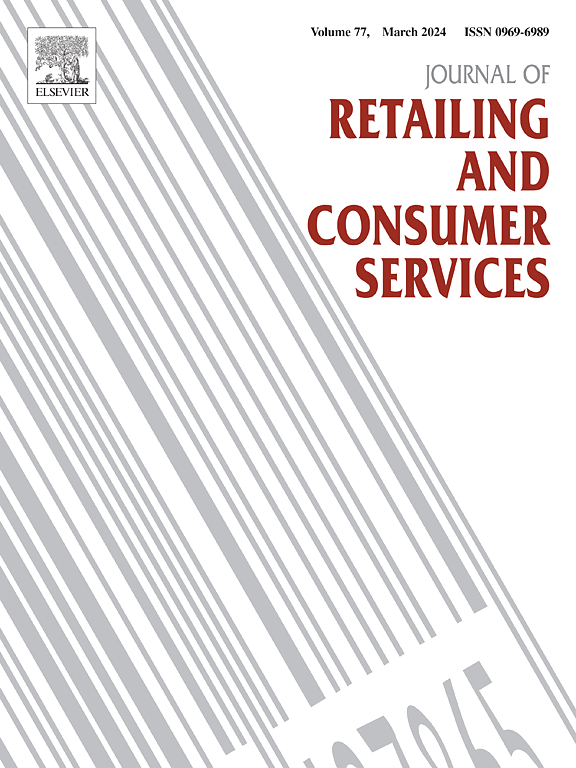从评论大数据解读消费者地理:使用商店密度和支出强度的供需二元视角
IF 13.1
1区 管理学
Q1 BUSINESS
Journal of Retailing and Consumer Services
Pub Date : 2025-07-15
DOI:10.1016/j.jretconser.2025.104423
引用次数: 0
摘要
消费者支出是社会经济条件和生活水平的一个关键指标,是多学科研究的一个重点。然而,线下消费支出数据难以获取,缺乏消费供需双方的开源估算方法和比较建模研究。本研究提出了一个利用点评大数据估算线下消费支出的框架,该框架简单有效。以店铺密度为供给侧代理,以线下预估支出为需求侧代理,利用机器学习模型分析消费者地理空间分布及其与城市环境因素的非线性联系。结果表明,基于审查大数据的估算准确反映了实际支出模式,解决了数据可及性问题。商店密度与消费者支出呈现一致的空间格局,增加支出所需的门槛高于增加商店密度所需的门槛。这些发现为城市规划者和企业提供了有价值的见解,强调了考虑商店布局的非线性影响和阈值效应的重要性。本研究为线下消费支出估算提供了可靠、开源的方法,推动了零售与消费者地理学的研究与实践,丰富了经济地理学的数据来源和建模视角。本文章由计算机程序翻译,如有差异,请以英文原文为准。
Unraveling the consumer geography from the review big data: A supply-demand duality perspective using store density and expenditure intensity
Consumer expenditure, a key indicator of socio-economic conditions and living standards, is a focus of multidisciplinary research. However, offline consumption expenditure data is hard to obtain, and there is a lack of open-source estimation methods and comparative modeling studies on both the supply and demand sides of consumption. This study proposes a framework for estimating offline consumption expenditure using review big data, which is simple and effective. Using store density as the supply-side proxy and estimated offline expenditure as the demand-side proxy, machine learning models are employed to analyze the spatial distribution of consumer geography and its nonlinear links with urban environmental factors. Results show that the review big data-based estimation accurately reflects actual expenditure patterns, solving the data accessibility issue. Store density and consumer expenditure exhibit a consistent spatial pattern, with higher thresholds needed to boost expenditure than to increase store density. These findings offer valuable insights for urban planners and businesses, emphasizing the importance of considering nonlinear impacts and threshold effects on store layout. This study provides a reliable, open-source method for estimating offline consumption expenditure, advancing research and practice in retail and consumer geography, and enriching data sources and modeling perspectives in economic geography.
求助全文
通过发布文献求助,成功后即可免费获取论文全文。
去求助
来源期刊
CiteScore
20.40
自引率
14.40%
发文量
340
审稿时长
20 days
期刊介绍:
The Journal of Retailing and Consumer Services is a prominent publication that serves as a platform for international and interdisciplinary research and discussions in the constantly evolving fields of retailing and services studies. With a specific emphasis on consumer behavior and policy and managerial decisions, the journal aims to foster contributions from academics encompassing diverse disciplines. The primary areas covered by the journal are:
Retailing and the sale of goods
The provision of consumer services, including transportation, tourism, and leisure.

 求助内容:
求助内容: 应助结果提醒方式:
应助结果提醒方式:


